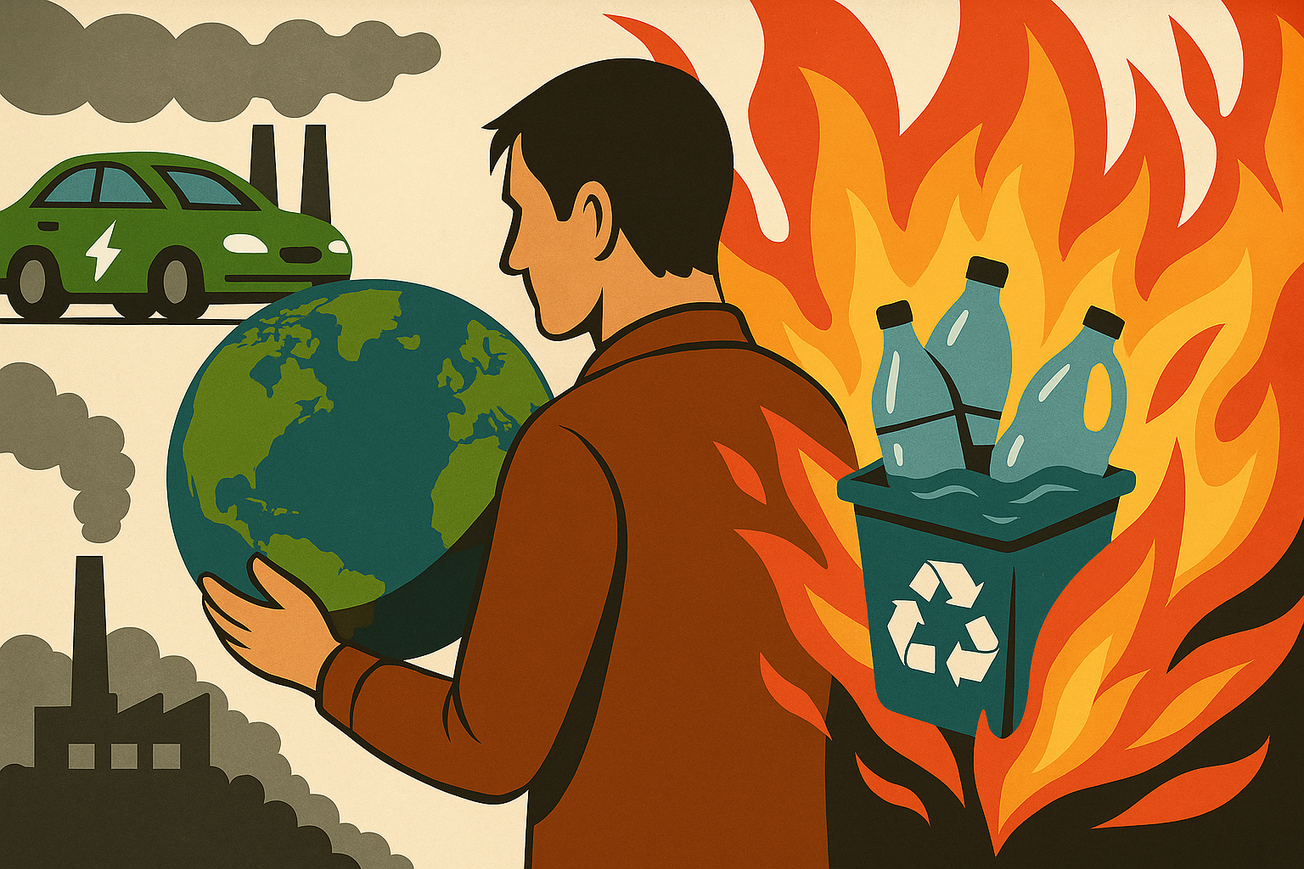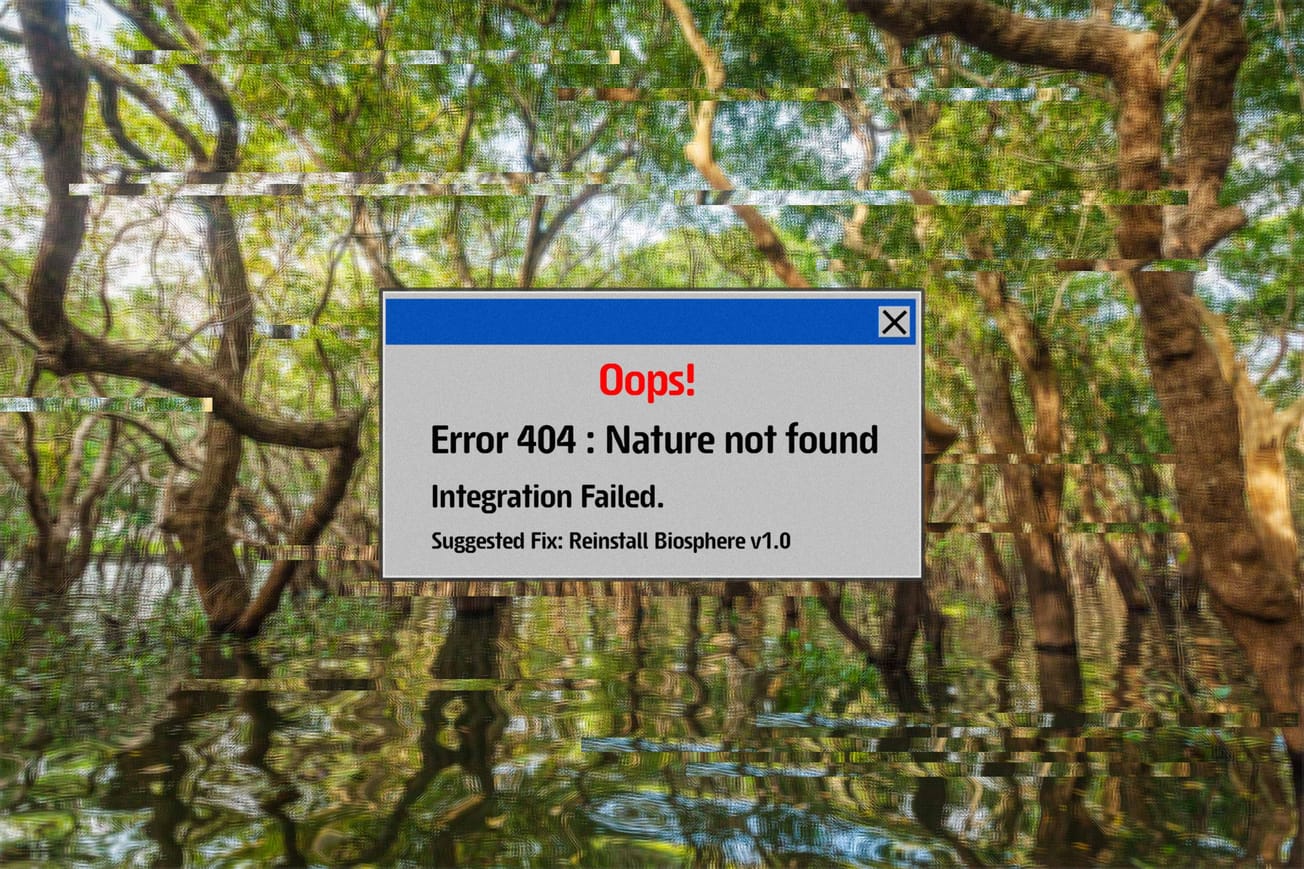More than fifty years after the first Earth Day, the stark reality is clear: despite decades of environmental activism and numerous initiatives, no significant indicator of planetary health has shown meaningful improvement. Greenhouse gas emissions continue to rise, deforestation accelerates, biodiversity declines, coral reefs perish, and plastic pollution intensifies. This troubling fact demands we critically reassess our approach to sustainability and question why our well-intentioned efforts have fallen short.
At the core of our environmental dilemma is an uncomfortable truth: many popular "green" solutions, while beneficial in theory, introduce unintended consequences when deployed in isolation. Take electric vehicles (EVs), for example. Once hailed as the hallmark of green transportation, EVs indeed reduce tailpipe emissions, but a deeper examination reveals hidden environmental costs. EV manufacturing involves intensive resource extraction for lithium-ion batteries, leading to ecological harm and human rights abuses, particularly in cobalt mines in the Democratic Republic of Congo and lithium extraction in South America. Moreover, the rapid innovation cycle has resulted in significantly shorter vehicle lifespans, with EVs replaced far more frequently than gasoline cars, thus diminishing their overall environmental benefits.
Additionally, the "rebound effect" undermines the supposed advantages of electric vehicles. Studies indicate EV owners often drive more, believing their impact is negligible, which offsets a substantial portion of emission reductions. Moreover, heavier EVs exacerbate tire and brake wear, producing particulate pollutants detrimental to air and water quality. Hence, simply electrifying transportation without broader systemic reforms risks swapping one set of environmental problems for another.
Similar complexities plague regenerative agriculture, specifically no-till farming practices widely promoted for soil conservation and carbon sequestration. Unfortunately, large-scale no-till farming frequently depends heavily on herbicides like glyphosate, which degrade soil health, pollute water systems, and contribute to biodiversity loss. Ironically, chemical-intensive no-till agriculture, despite its "regenerative" label, can significantly increase environmental harm and carbon emissions from chemical production. Truly regenerative practices must reduce synthetic inputs, integrate crop diversity, and enhance ecological balance, practices that require deeper systemic shifts rather than isolated techniques.
Recycling, another environmental mainstay, also reveals troubling shortcomings. Despite widespread public support and participation, actual recycling rates, especially for plastics, remain shockingly low. A staggering proportion of collected recyclables are contaminated, economically unviable, or shipped abroad to countries ill-equipped to manage them. The result: well-intentioned recycling programs inadvertently perpetuate global waste inequities and environmental injustice. Producers have historically used recycling campaigns as greenwashing tools, deflecting responsibility for sustainable product design and perpetuating a throwaway culture. True sustainability necessitates prioritizing waste reduction at the source, mandating product recyclability, and enforcing producer accountability rather than merely pushing responsibility onto consumers.
Bioenergy, promoted as a renewable alternative to fossil fuels, has likewise shown substantial unintended environmental impacts. Policies incentivizing biofuels have inadvertently triggered significant deforestation, biodiversity loss, and heightened emissions. Corn ethanol production in the U.S., for instance, drove extensive land-use changes, negating its anticipated carbon benefits and exacerbating nutrient pollution in waterways. Similarly, Europe's demand for palm oil biodiesel significantly accelerated tropical deforestation in Southeast Asia. Burning biomass for energy has further complicated the picture, often increasing carbon emissions relative to fossil fuels due to flawed accounting methodologies that overlook immediate emissions from forest clearing.
Perhaps the most illustrative example of problematic environmental solutions is the widespread reliance on carbon offsets. Offsets allow entities to pay for emission reductions elsewhere, creating an illusion of neutrality that often delays real action. Investigations into offset programs like forest preservation have exposed severe flaws with over 90% of certain forest-based offsets being ineffective or fraudulent. The impermanence of such offsets and their susceptibility to disasters such as wildfires further undermines their reliability. Instead of genuinely reducing emissions, offsets frequently provide corporations a superficial means of continuing environmentally damaging operations under the guise of responsibility.
Furthermore, the environmental movement must confront the profound harm perpetuated by global agricultural subsidies, totaling over half a trillion dollars annually. A staggering 90% of these subsidies support environmentally destructive farming practices, exacerbating climate change and biodiversity loss. Subsidies favoring livestock production disproportionately fuel deforestation, habitat destruction, and greenhouse gas emissions, undermining stated climate goals and worsening global inequalities. Redirecting subsidies toward sustainable agriculture, prioritizing ecological practices and nutrient-rich, plant-based food production, is imperative to realigning agricultural policy with environmental and health objectives.
Moreover, the financial sector continues to enable massive deforestation and ecological harm through investments and loans to environmentally destructive industries. Major banks consistently provide substantial funding to corporations driving forest loss, highlighting a troubling disconnect between stated environmental commitments and actual financial practices. Strengthened regulations and enforceable due diligence are urgently needed to halt the flow of capital into harmful ventures.
Equally concerning is the pattern of indigenous displacement resulting from conservation and climate initiatives, exemplified by forced evictions in Kenya’s Mau Forest and Botswana’s Central Kalahari. Such cases underscore the ethical and practical failures of "fortress conservation," which dispossess indigenous communities who have sustainably stewarded these lands for generations. True conservation success depends fundamentally on respecting indigenous rights and incorporating local knowledge and participation in environmental stewardship.
In summary, these case studies illustrate a critical point: isolated, technocratic fixes alone cannot resolve complex environmental crises. Sustainability requires comprehensive systemic transformation including rethinking our approach to transportation, agriculture, waste, energy, and economic systems in tandem. Rather than relying on individual innovations or simplistic solutions, we must embrace integrated approaches, rigorous accountability, and adaptive management that addresses root causes rather than symptoms.
Real sustainability involves fundamental shifts in how societies produce, consume, and value the natural world, guided by justice and scientific integrity. It means prioritizing quality of life over endless growth, cooperation over exploitation, and stewardship over short-term profits. By acknowledging the complexities and interdependencies of our environmental challenges, we can move beyond superficial remedies towards lasting systemic transformation. This is our true pathway to a resilient, equitable, and genuinely sustainable future.













